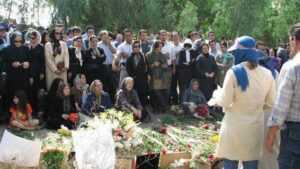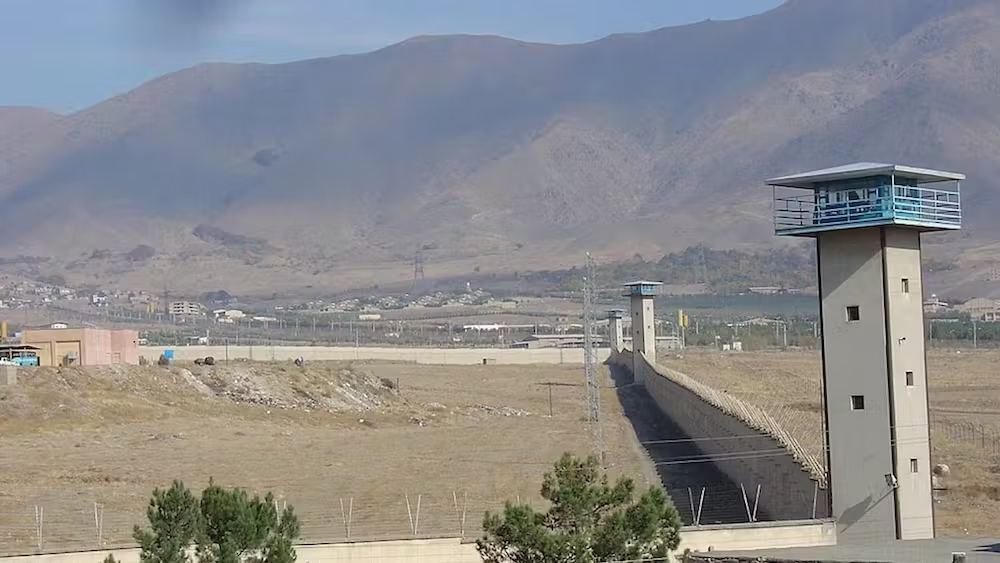Omid Rezaee
The God-state of Iran is eliminating the places that commemorate its grievous human rights violations. On the other hand, Iranian society is turning more and more to the culture of remembrance.
On August 5, 2023, the famous Gohardasht prison was officially closed after the last inmates were transferred to Ghezel Hesar prison. This transfer was essentially on the orders of the Islamic Republic’s judiciary chief, who also announced the upcoming closure of Ghezel Hesar Prison.
Thus, one of the most significant memorials of Iran’s late history will be transformed, if not wholly destroyed. For Gohardasht is not just a regular prison. This place is the arena of one of the darkest chapters in the history of oppression and, thus, resistance in Iran.
Gohardasht Prison is located in Alborz Province, north of the metropolis of Karaj. However, it is one of the correctional facilities in Tehran province. Hundreds of political prisoners, among others, were imprisoned in the prison. The prison’s closure had been announced on April 10, 2023, by Ayatollah Mohseni Eje’ee, the head of Iran’s judiciary. The governor of the province claimed on April 6 that the prison’s closure was in response to the demand of the local population. Mohseni Eje’ee also said the goal was the well-being of local residents.
The Islamic Republic has been planning to relocate correctional facilities located in cities for years. In January 2017, Iran’s parliament, the Majlis, decided that 20 detention centers should be moved from inner cities to the outskirts. Accordingly, prisons in big cities and metropolitan areas were the highest priority.
The process gained pace after President Ibrahim Raisi took office, which does not seem to be a coincidental development given the history of Gohardasht Prison.
Raisi, in the shadow of his past
There is no doubt that President Raisi was directly and actively involved in the mass executions in Iran in the summer of 1988. As deputy prosecutor of the capital at the time, he was a member of a four-person committee that sentenced thousands of political prisoners to death in a matter of minutes between July and September 1988. Many of those executed were about to be released and had nearly served their sentences. The place where the mass executions began in the summer of 1988 was none other than Gohardasht Prison. Although these death sentences were not confined to any particular facility or region in the country, the events of Gohardasht hold a special place, as evidenced by the experiences of those executed, their relatives, and survivors.
One of them is Monireh Baradaran. Now 69, she was among those imprisoned in Gohardasht in the 1980s: “Within about six weeks, thousands were executed in this prison. The execution rope hung permanently in the prison’s mosque. The prisoners saw wheelbarrows taking the piles of shoes of the executed outside and the refrigerated trucks taking away the bodies.” Baradaran’s observation coincides with testimonies from an unprecedented court case in Sweden. On July 14, 2022, a Stockholm court sentenced an Iranian national named Hamid Nouri to life in prison for his involvement in the executions in Gohardasht during that summer. He was reportedly the assistant prosecutor in charge at the jail at the time. In this trial, 34 prosecutors and 26 witnesses testified. Defendant Nouri denied the charges and testimony by claiming that there was no Gohardasht prison in Iran. He had worked in Rajai Shahr prison, he said. This demonstrates an older attempt by the Islamic “God State” to rid the institution of memories: In early March 1989 – a few months after the mass executions – the government decided to rename the Gohardasht district, where Gohardasht Prison was located and after which it was named, into Rajai-Shahr. Since then, state documents have also referred to the prison as “Rajai-Shahr Prison.” There is absolute silence about the name “Gohardasht Prison” in the state-affiliated and state-run media.
Monireh Baradaran believes that the name has been further discredited by Nouri’s trial. This, she says, forced the regime to react by closing the facility entirely.
The mass graves in Khavaran

The closure of Gohardasht is by no means the first and only attempt by the Islamic regime to erase memories of the 1988 executions. If the Shiite rulers have their way, the cemetery where thousands of those executed at the time are buried is also to be forgotten. An unknown number of those executed that summer were buried in the Khavaran cemetery. Historically, this has been a cemetery for religious minorities. However, security forces buried murdered political prisoners’ bodies next to the cemetery in unmarked mass graves. This was done as secretly as the executions themselves, without notification of the families. Only later did the bereaved families learn of this. Every September, they gather at this cemetery to remember their executed loved ones. These gatherings rarely end without clashes with police and arrests.
In 2008, families reported that the government had taken action to destroy the cemetery. In 2018, Amnesty International confirmed these reports.
When the regime buried the first political executed there in the early 1980s, the plan was that no one would ever know about it, says Monireh Baradaran, author of “Awakening from the Nightmare.” But thanks to the dedication of the families, the place became known over time: “Relatives of executed people, some of whom had met outside the prisons, found themselves together again at this cemetery. At first, they went to Khavaran individually. From this, joint visits gradually sprung up. The tragedy of the summer of 1988 brought them together. Gradually, they were noticed by wider society.”
Video and photo footage from the mid-2000s reveal hundreds marching to the cemetery and singing memorial songs for those executed.
“These places of remembrance became and still become places of remembrance only when political actors fight for them. Otherwise, they are merely places. Without resistance from bereaved families, Khavaran would have been just a desert in the Tehran suburbs. Gohardasht would have been a prison like all the others,” says Monireh Baradaran, who herself survived the mass executions only by luck. The political commitment of the bereaved and survivors has reconstructed the memories of Gohardasht and Khavaran in the collective memory of Iranians, she says.
The culture of remembrance is taking hold
A decade ago, it could have been argued that the “state of God” had largely succeeded in preventing the 1988 massacre from being the subject of public debate. For several years, however, seeking justice for the 1988 massacre has strongly influenced public discourse. The question of why they were murdered has been raised much more recently, says Monireh Baradaran, whose brother was executed in 1981. “We have also seen this clearly in the recent protests. The murder of Jina Mahsa Amini has provoked resistance not only among her family but also in her hometown, throughout Kurdistan, and then throughout the country.” The regime, she said, has also recognized that seeking justice and the culture of remembrance have the potential to become the showcase of resistance. Therefore, it planned to destroy these sites. “Nevertheless, we still have a long way to go in terms of the culture of remembrance,” says Baradaran, who co-creates an online platform to commemorate those executed in the 1980s. “Because only by remembering can we prevent such events from happening again.”
This article first appeared in German on Iran Journal: Kampf um die Erinnerung


